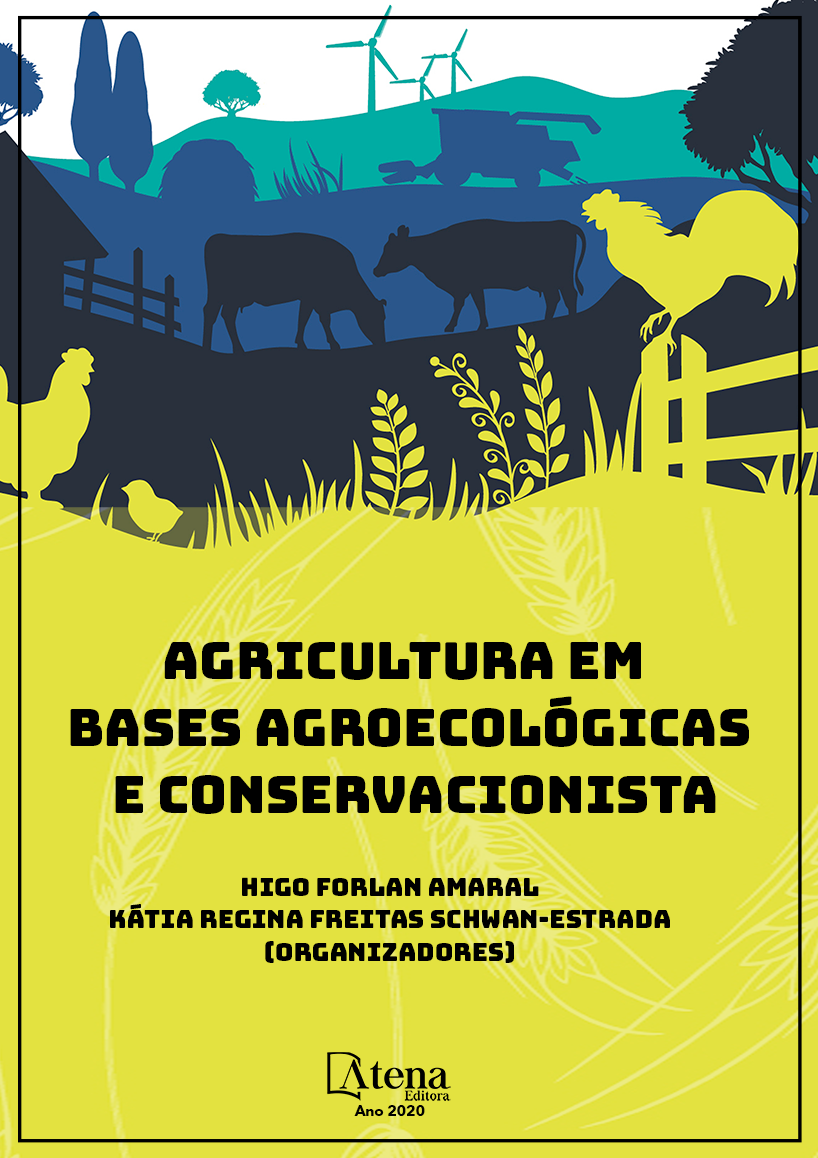
COMPATIBILIDADE DA INOCULAÇÃO DE Rhizobium tropici EM FEIJOEIRO COMUM EM DIFERENTES TIPOS DE ADUBAÇÃO ORGÂNICA
A cultura do feijoeiro é uma das
mais representativas no país com expressiva
área cultivada e produtividade, principalmente
quando aplicado níveis tecnológicos. É também
importante para o consumo da população
para sua base proteica diária. A associação
simbiótica desta planta com as bactérias
do grupo Rhizobium é capaz de substituir
relevante parte da adubação nitrogenada,
consequente redução do custo de produção.
Na agroecologia utiliza-se diferentes tipos de
adubação orgânica e não há recomendação
agronômica bem detalhada quanto a inoculação
com rizóbios. O objetivo do estudo foi avaliar
a compatibilidade da inoculação de R. tropici
em feijoeiro comum em diferentes tipos de
adubação orgânica. O ensaio foi conduzido em
delineamento inteiramente casualizado com
cinco tratamentos, sendo: ‘Branco (sem R.
tropici), R. tropici, Fertilizante Organomineral,
Cama de Frango e Bokashi’; com exceção do
primeiro, os demais todos foram inoculados.
Avaliaram-se componentes de nodulação e
produção. A nodulação foi favorecida pela
inoculação com rizóbio, bem como pelas
estirpes nativas do solo. Os componentes
Massa fresca e seca de parte aérea tiveram
maiores valores com a utilização de Cama de
Frango e Bokashi. A produtividade foi maior
com o uso de Bokashi, porém, tal resultado
não se relaciona o rizóbio, pois não houve
formação de nódulos. As variáveis de raiz não
apresentaram diferença entre os tratamentos,
pois a nodulação foi inferior. O Bokashi não
apresentou compatibilidade ao R. tropici, aos
demais tratamentos.
COMPATIBILIDADE DA INOCULAÇÃO DE Rhizobium tropici EM FEIJOEIRO COMUM EM DIFERENTES TIPOS DE ADUBAÇÃO ORGÂNICA
-
DOI: 10.22533/at.ed.07220210212
-
Palavras-chave: Phaseolus vulgaris. Adubação orgânica. Bioativação do solo. Bokashi. Agroecologia. Cama de Frango.
-
Keywords: Phaseolus vulgaris. Organic fertilization. Soil bioactivation. Bokashi. Agroecology. Poultry Litter.
-
Abstract:
The common bean crop is one of
the most representative in Brazil with significant
cultivated area and productivity, especially when
applied technological levels and is important for
protein base of the daily diet of the population.
The symbiotic association between bean and rhizobia bacteria is relevant replace
of nitrogen fertilization, consequently reducing production costs. In agroecology
different types of organic fertilization are used and there is no detailed agronomic
recommendation regarding inoculation with rhizobia. The objective of the study was to
evaluate the compatibility of R. tropici inoculation in common bean in different types of
organic fertilization. The trial in a completely randomized design had five treatments,
being: White (without R. tropici); R. tropici; Organomineral Fertilizer; Poultry Litter and
Bokashi, except for the first, the others all were inoculated. Nodulation and production
components were evaluated. Nodulation was favored by inoculation with rhizobia, as
well as native soil strains. Fresh and dry mass of aerial part had higher values in Poultry
Litter and Bokashi with rhizobium. The productivity was higher with the use of Bokashi,
however, this result is not related to the rhizobium, because there was no formation of
nodules. Root variables showed no difference between treatments. Bokashi was not
compatible with R. tropici, because the nodulation was inferior to the other treatments.
-
Número de páginas: 15
- Jonas A. Dário
- Higo Forlan Amaral
- Bruno


